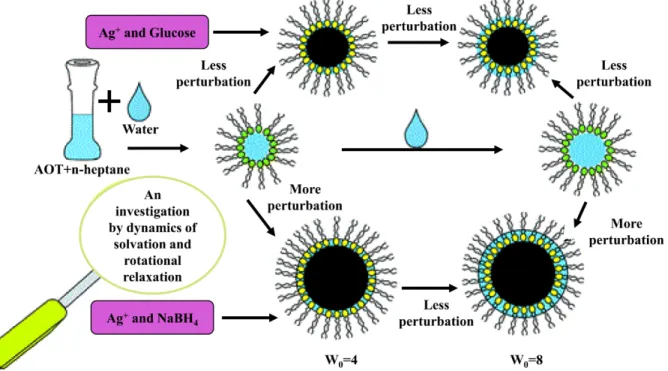HAL Id: hal-01791687
https://hal.archives-ouvertes.fr/hal-01791687
Submitted on 12 Mar 2019HAL is a multi-disciplinary open access archive for the deposit and dissemination of sci-entific research documents, whether they are pub-lished or not. The documents may come from teaching and research institutions in France or abroad, or from public or private research centers.
L’archive ouverte pluridisciplinaire HAL, est destinée au dépôt et à la diffusion de documents scientifiques de niveau recherche, publiés ou non, émanant des établissements d’enseignement et de recherche français ou étrangers, des laboratoires publics ou privés.
Nanoscience in Food and Agriculture 4. Preface
Shivendu Ranjan, Eric Lichtfouse, Nandita Dasgupta
To cite this version:
Shivendu Ranjan, Eric Lichtfouse, Nandita Dasgupta. Nanoscience in Food and Agriculture 4. Preface. Shivendu Ranjan, Nandita Dasgupta, Eric Lichtfouse. Nanoscience in Food and Agriculture 4, 24, Springer Nature, pp.VII-IX, 2017, Sustainable Agriculture Reviews, 978-3-319-53112-0. �10.1007/978-3-319-53112-0�. �hal-01791687�
Preface
We dedicate this book to our parents Nano-materials: anciently present but recently discovered Nandita Dasgupta and Shivendu Ranjan This book is the fourth of several volumes on Nanoscience in Food and Agriculture, published in the series Sustainable Agriculture Reviews (http://www.springer.com/series/8380).
Nanotechnology, which is the use of techniques to build nanomaterials, is a fast emerging scientific topic. However nanomaterials are not new, they have always occurred in nature. What is new is the methods that allow to synthesise unprecedented nanomaterials of taylored, fine-tuned properties, thus opening many applications in diverse fields. In particular, the high surface to volume ratio of engineered nanomaterials makes them often more efficient than in nature. Surprisingly, some nanomaterials even exhibit contrasting properties compared to their macro counterpart. While nanomaterials are actually commercialized in various sectors, their use in food industries is still slowly emerging and debated. Results show that nanomaterials improve bioavailability, shelf life and nutrient deliver, they reduce nutrient loss and are essential in active packaging. Active packaging, also named intelligent or smart packaging, refers to packaging systems that help to extend shelf life, monitor freshness, display information on quality, improve safety, and improve convenience. Nethertheless, the potential toxicity of new nanomaterials should be studied before their use in consumer products (Figure 1). This book presents comprehensive reviews on the principles, design and applications of nanomaterials in food, water and pharmaceutical sectors.
Figure 1. Nano-food products are reaching stores. This image has been modified and designed from a copyright free image source by Nandita Dasgupta – VIT University, India.
A nanocomposite is a multicomponent solid where one to the components has dimensions of less than 100 nm. It is a solid combination of a bulk matrix and nano-dimensional components differing in properties due to dissimilarities in structure and chemistry. In the broadest sense nanocomposites include porous media, colloids, gels and copolymers. The principles and application of nanomaterials in food packaging, with focus on nanocomposites, are presented in the two first chapters by Ramos et al. and Ahmad et al. The synthesis and applications of
nanoemulsions, that are stable systems containing two immiscible liquids, is then reviewed by
Bhushani and Anandharamakrishnan in chapter 3. Aiming at the safe design nanomaterials for food, Manickam et al. discusses recent advances on the genotoxicity of nanomaterials in chapter 4. Chaurasiya and Hebbar then describe in chapter 5 the use of reverse micelles as nanoreactors for the synthesis of nanomaterials, and for the separation of biomolecules (Figure 2). Chapter 6 by Paroha et al. review nanotechnology applications for the efficient delivery of coenzyme Q10, a health supplement.
Figure 2: Effect of the different reducing agents (glucose and sodium tetrahydroboride) on the size of silver nanoparticle synthesized in bis(2-ethylhexyl) sulfosuccinate sodium salt/n-heptane system. Sodium tetrahydroboride thus produces bigger size of silver nanoparticles, which causes more perturbation to reverse micelles. Chaurasia and Hebbar, Chapter 5.
The use of enzymatic nanosensor for detection of contaminants in food, water and agriculture is presented in chapter 7 by Verma. Health supplements and nutraceuticals can be developped by nano co-polymerization of natural products with polyethylene glycol and polydimethylsiloxane, as reviewed by Pandey et al. in chapter 8. Biofuel production from waste using nanotechnology is then discussed by Srivastava et al in chapter 9. Arsenic remediation by nanotechnologies, with emphasis on iron oxide nanomaterials, is presented by Paroda et al. in the last chapter. Thanks for reading
Shivendu Ranjan, Nandita Dasgupta, Eric Lichtfouse

